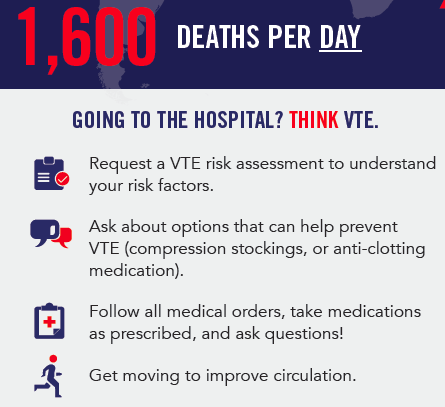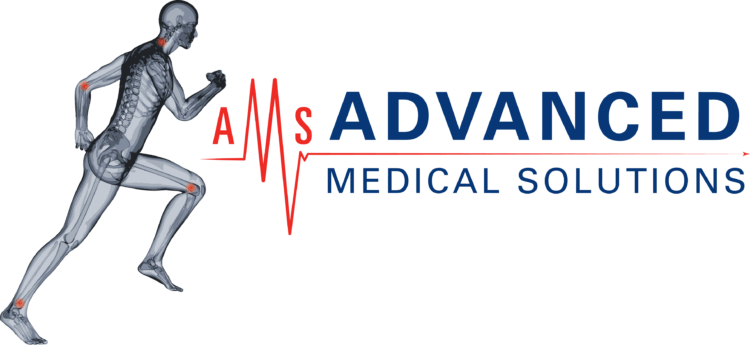Today is World Thrombosis Day

We are a proud sponsor of World Thrombosis Day because we believe it is increasingly important to become aware of your risk of developing venous thromboembolism (VTE).
60% of all VTE cases are associated with a hospital stay. Meaning, the patient developed their VTE while they were still in the hospital or sometime during the 90 days after their hospitalization.
Certain surgeries and medical procedures are considered to be high risk for the development of VTE. If you or a loved one will be undergoing one of the procedures listed below, it is important to be an advocate for your health. Request a VTE Risk Assessment to be done and discuss blood clot prevention with your doctor.
- Orthopedic surgery (e.g., total hip or knee surgery)
- Major general surgery (especially involving the abdomen, pelvis, hip or legs)
- Major gynecological surgery
- Urological surgery
- Neurosurgery
- Cardiothoracic surgery
- Major peripheral vascular surgery
- Chemotherapy for cancer treatment
A blood clot can form at any time, whether you are having one of the above procedures or not. Therefore, it is important to always be aware of your risks and know the signs and symptoms of a DVT (deep vein thrombosis) and a PE (pulmonary embolism). We have included a few other resources below to help you better understand VTE, and give you the knowledge you need to discuss things further with your doctor.
- Know the signs and symptoms of a DVT or a PE
- What are the risk factors for developing a VTE?
- Questionnaire to take with you to the hospital to help in your discussion with your doctor.
We want you to remain healthy and continue to live your life to the fullest! If your doctor determines you have a risk of developing a VTE, ask them about including a pneumatic compression device in your course of prescription measures. Studies have shown that combining a pneumatic compression device, with a prescription pharmacological prophylaxis, can significantly reduce the occurrence of VTE in patients who are at risk of developing the condition. To learn more about the devices we offer, visit our DVT Prevention Page.


